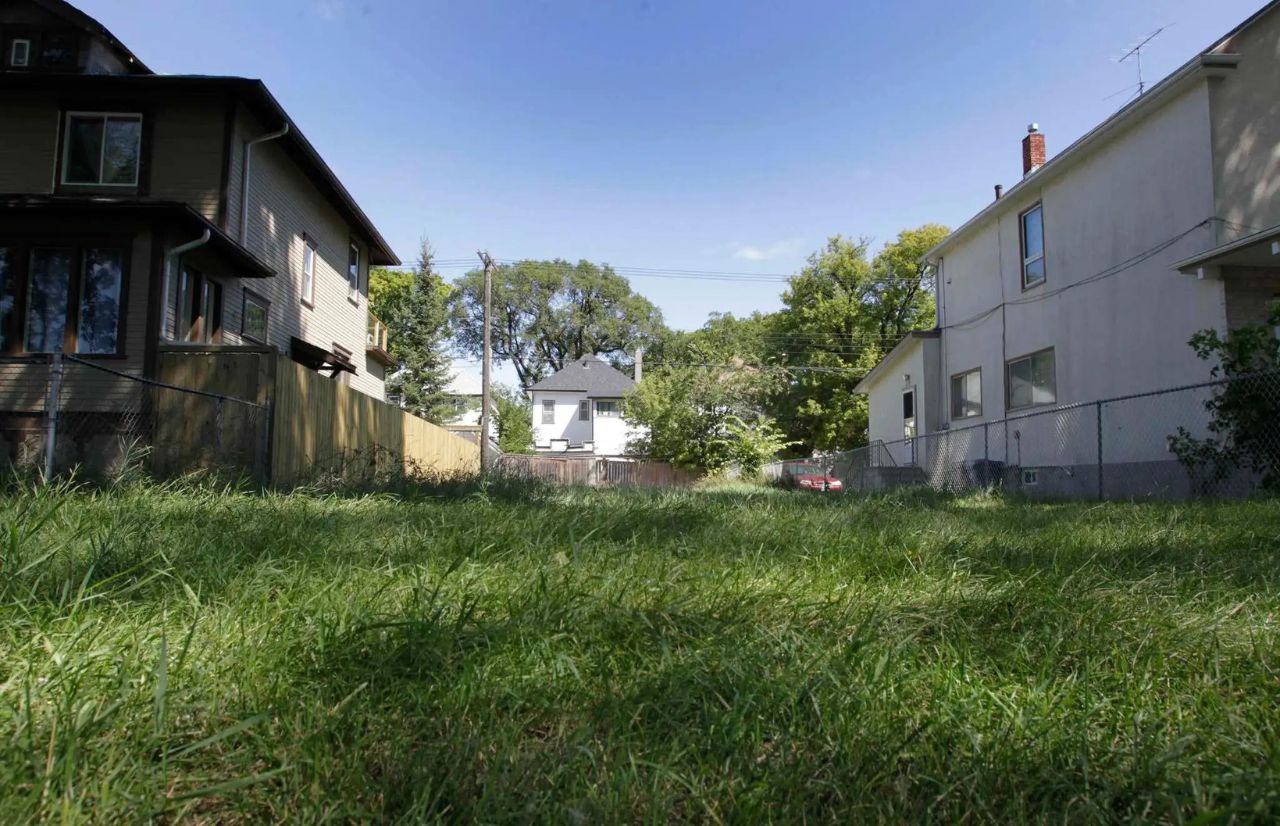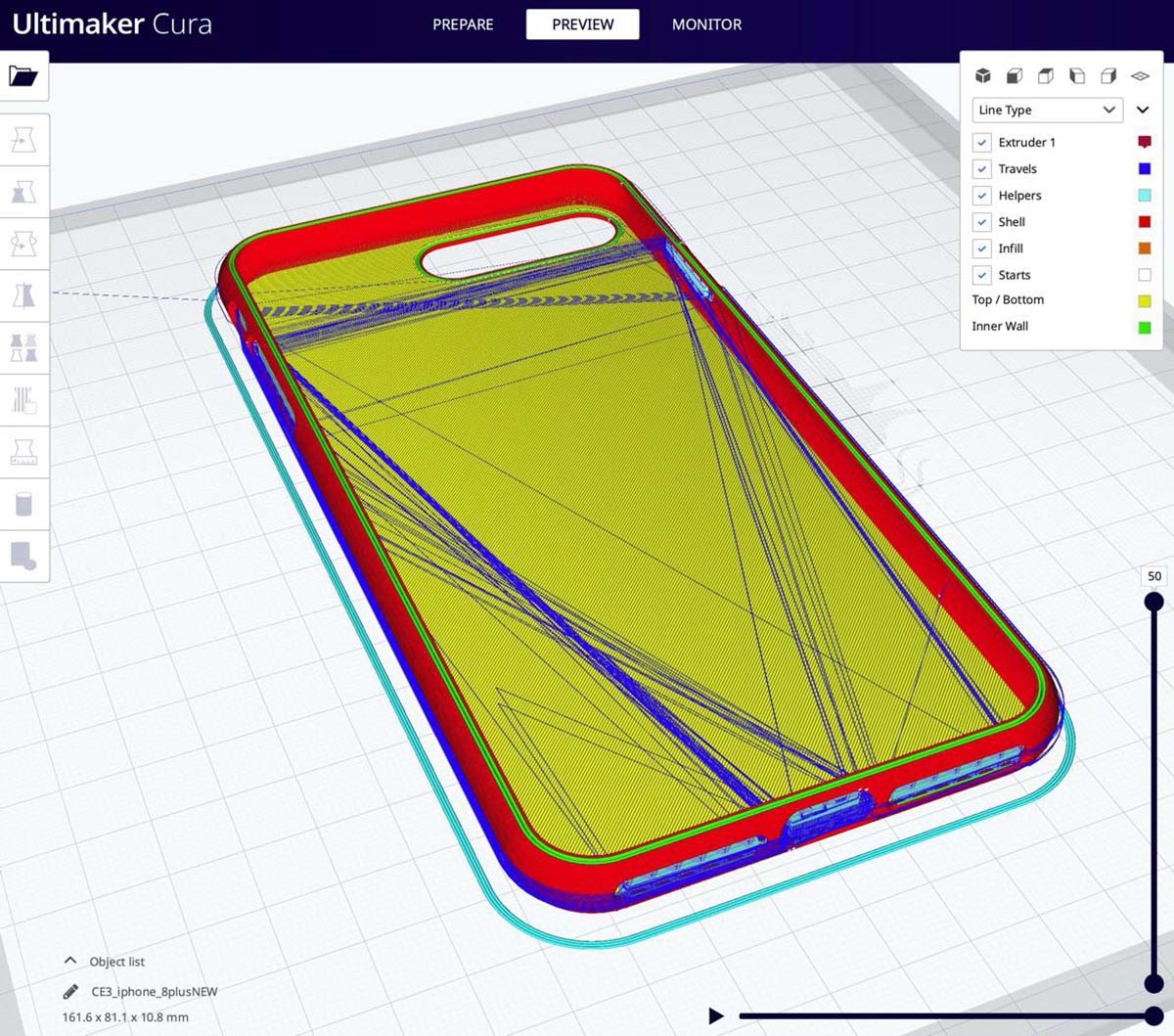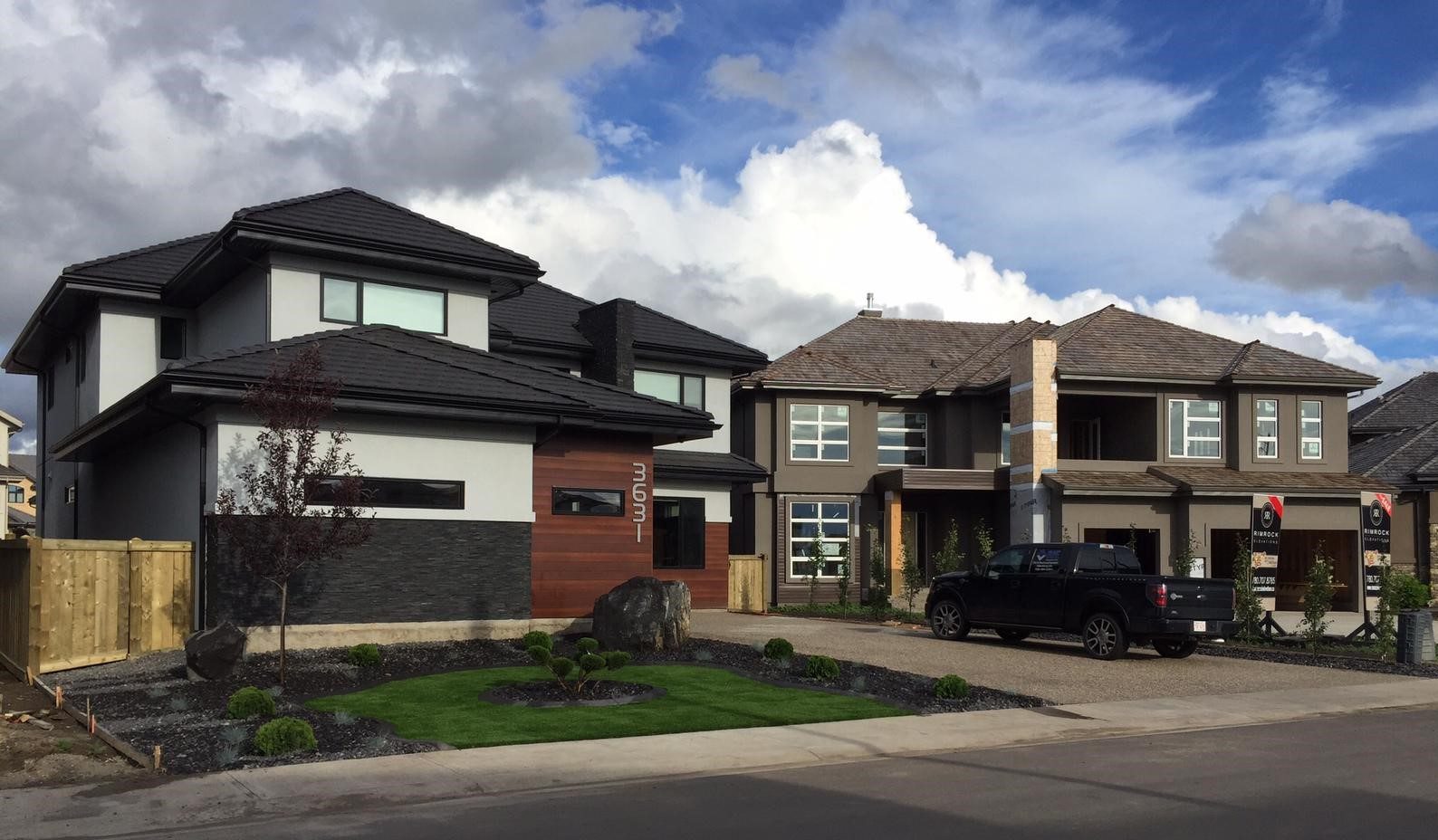Home>Garden Essentials>How To Analyze Opportunities For Lot Infill


Garden Essentials
How To Analyze Opportunities For Lot Infill
Modified: March 7, 2024
Learn how to analyze opportunities for lot infill and create a garden oasis. Explore tips and strategies to make the most of limited space and transform your property into a green haven.
(Many of the links in this article redirect to a specific reviewed product. Your purchase of these products through affiliate links helps to generate commission for Storables.com, at no extra cost. Learn more)
Introduction
Welcome to the world of lot infill, where artistry meets opportunity! Lot infill refers to the process of developing vacant or underutilized land within existing urban areas. It presents a unique and exciting opportunity to add value to a neighborhood by maximizing land use and creating new, vibrant spaces.
Lot infill projects can range from single-family homes to multi-unit residential buildings or even commercial spaces. They are characterized by their ability to harmoniously blend with existing infrastructure and contribute to the overall growth and development of a community.
In this article, we will explore how to analyze opportunities for lot infill and make informed decisions when considering such projects. We will discuss the various factors to consider, from identifying potential opportunities to assessing market demand, regulatory requirements, and conducting site analysis. By the end of this article, you will have a comprehensive understanding of the steps involved in analyzing lot infill projects.
So, let’s dive in and unlock the potential of lot infill!
Key Takeaways:
- Lot infill projects breathe new life into urban areas by utilizing vacant land, promoting walkability, and enhancing neighborhood appeal, ultimately contributing to sustainable and vibrant communities.
- Analyzing lot infill opportunities involves thorough research, understanding market demand, assessing regulatory requirements, and conducting site analysis, all crucial for making informed decisions and ensuring project success.
Read more: What Are Infill Lots
Understanding Lot Infill
Before delving into the analysis of lot infill opportunities, it’s important to have a clear understanding of what lot infill entails. Lot infill refers to the development of vacant or underutilized land within existing urban areas. Unlike greenfield development, which involves constructing on undeveloped land, lot infill optimizes existing land resources to create new structures or repurpose existing ones.
Lot infill projects have gained popularity due to several reasons. Firstly, they contribute to urban revitalization by utilizing spaces that would otherwise remain vacant or stagnant. This revitalization enhances the overall appeal of the neighborhood, attracting businesses, residents, and investment.
Additionally, lot infill projects help in combating urban sprawl, a phenomenon that leads to the expansion of cities into suburban areas. By utilizing existing land, lot infill reduces the need for further development on undeveloped land on the outskirts of cities, thereby preserving natural habitats and conserving resources.
Lot infill also promotes walkability and connectivity within urban areas. By utilizing vacant lots within existing neighborhoods, new structures can be positioned closer to amenities such as schools, parks, and businesses. This proximity enhances the accessibility and convenience for residents and promotes a sustainable lifestyle.
Furthermore, lot infill projects often contribute to the overall aesthetic value of a neighborhood. They offer an opportunity to enhance and diversify the architectural fabric of an area, adding character and uniqueness to the built environment. This contribution to the visual appeal of the community can have a positive impact on property values and desirability.
Understanding the advantages and benefits of lot infill is essential in analyzing opportunities for such projects. It sets the foundation for making informed decisions and realizing the potential for development within existing urban areas. Now that we’ve grasped the essence of lot infill, let’s move on to identifying potential opportunities for these projects.
Identifying Potential Lot Infill Opportunities
Identifying potential lot infill opportunities is the first step in the analysis process. It involves conducting a thorough assessment of the existing urban landscape to identify vacant or underutilized parcels of land that have the potential for development. Here are some key strategies to consider:
- Research and Data Analysis: Start by researching the local real estate market and zoning regulations. Look for areas that are experiencing growth, have high demand for housing or commercial space, and where the local zoning allows for lot infill development. This research can help you identify neighborhoods that are ripe for development.
- Visual Surveys: Take to the streets and conduct visual surveys of the neighborhood. Look for vacant lots, abandoned buildings, or underutilized spaces. Keep an eye out for properties that are in disrepair or have potential for adaptive reuse. These sites may present unique opportunities for lot infill.
- Engage with Local Stakeholders: Reach out to local residents, business owners, and community organizations to get a pulse on potential lot infill opportunities. They may have knowledge of properties that are available or upcoming development projects that could create opportunities for infill development.
- Utilize Online Resources: Online real estate platforms and property listing websites can be valuable tools for identifying potential infill opportunities. Search for keywords such as “vacant land,” “development site,” or “lot infill” to narrow down your search. Add filters like location, size, and price to refine your results.
By utilizing these strategies, you can create a list of potential lot infill opportunities. It’s important to keep in mind the specific criteria and goals of your project. Consider factors such as location, size, zoning regulations, surrounding amenities, and market demand to prioritize the opportunities that align with your objectives.
Once you have identified potential lot infill opportunities, the next step is to assess their feasibility. This involves evaluating various factors such as market demand, regulatory requirements, site analysis, and financial modeling. We will explore these aspects in the following sections to help you make informed decisions about lot infill projects.
Assessing the Feasibility of Lot Infill Projects
Assessing the feasibility of lot infill projects is a critical step in determining whether a potential opportunity is worth pursuing. It involves evaluating various factors to determine if the project is financially viable and aligns with your goals and resources. Here are some key considerations:
- Market Demand: Conduct a market analysis to understand the demand for the type of development you are considering. Evaluate factors such as population growth, demographic trends, market saturation, and comparable sales or rental prices. This will help you gauge the level of demand and potential profitability of the project.
- Regulatory Requirements: Familiarize yourself with the local zoning regulations, building codes, and permitting processes. Determine if the proposed project complies with these requirements or if variances or special permits are necessary. Understanding the regulatory landscape will give you insights into potential challenges and timelines for approval.
- Site Analysis and Constraints: Evaluate the physical characteristics of the site to assess any constraints or limitations that may impact the development. Consider factors such as topography, access to utilities, environmental concerns, and any existing infrastructure on the site. Identify any potential issues that may require additional resources or affect the feasibility of the project.
- Financial Modeling: Develop a comprehensive financial model to determine the potential return on investment (ROI) and financial feasibility of the project. Consider factors such as acquisition costs, construction costs, financing options, operating expenses, and projected revenues. This analysis will help you assess the profitability of the project and determine if it aligns with your financial goals.
By thoroughly assessing the feasibility of lot infill projects, you can make informed decisions about which opportunities to pursue. It is crucial to have a clear understanding of the potential risks, challenges, and financial implications associated with the project.
In addition to assessing feasibility, it is also essential to evaluate the regulatory and zoning requirements that may impact the lot infill project. We will discuss this aspect in more detail in the next section.
Analyzing Market Demand and Potential ROI
When considering a lot infill project, it is crucial to thoroughly analyze the market demand and potential return on investment (ROI). Understanding market dynamics and assessing the profitability of the project are key to making informed decisions. Here are the steps to analyze market demand and potential ROI:
- Research the Market: Conduct market research to understand the current demand for the type of development you are considering. Look at factors such as population growth, employment trends, and market saturation. Identify any underserved markets or emerging trends that present opportunities for your project.
- Identify the Target Market: Define your target market for the lot infill project. Determine the demographics, preferences, and needs of your potential buyers or tenants. This will help you tailor the development to meet their specific demands and increase the chances of market acceptance.
- Comparable Analysis: Analyze recent sales or rental prices of similar properties in the area to determine the potential sale or rental value of your project. This will give you an indication of the potential revenue and help in estimating the ROI.
- Assess Project Costs and Financing: Determine the total project costs, including land acquisition, construction and development expenses, marketing costs, and financing costs. Evaluate different financing options and their impact on the ROI. Consider factors such as interest rates, loan terms, and equity requirements.
- Financial Projections: Develop financial projections that estimate the revenue and expenses over the project’s lifespan. Consider variables such as occupancy rates, rental increases, operating expenses, and potential fluctuations in the market. These projections will help you assess the potential ROI and make more accurate investment decisions.
By analyzing market demand and potential ROI, you can determine the viability and profitability of your lot infill project. It is important to continuously monitor market trends and seek professional advice to ensure your analysis remains up to date and accurate.
Next, we will delve into the evaluation of regulatory and zoning requirements, which play a crucial role in the success of lot infill projects.
When analyzing opportunities for lot infill, consider factors such as zoning regulations, infrastructure availability, and neighborhood compatibility to determine the feasibility and potential success of the project.
Read more: How To Store A Lot Of Jewelry
Evaluating Regulatory and Zoning Requirements
Evaluating regulatory and zoning requirements is a crucial step in the lot infill analysis process. Understanding the rules and regulations governing the development of your chosen site is essential for a successful project. Here are the key considerations when evaluating regulatory and zoning requirements:
- Research Local Regulations: Familiarize yourself with the local planning and zoning regulations governing the area where your potential lot infill project is located. Review the zoning classification, development standards, setback requirements, parking regulations, and any other applicable regulations. This will ensure that your project aligns with the existing guidelines and requirements.
- Zoning Variance or Special Permits: Assess whether any zoning variances or special permits are required for your proposed development. This may involve additional steps such as public hearings, community outreach, or negotiation with local authorities. Be prepared for potential delays and costs associated with obtaining variances or permits.
- Environmental Considerations: Determine if any environmental regulations or restrictions apply to your lot infill project. Consider factors such as protected wetlands, wildlife habitats, or contaminated sites that may require additional assessments or mitigation measures. Compliance with environmental regulations is vital for the success and sustainability of your project.
- Historical Preservation: If your project involves a historical building or is located in a designated historic district, understand the preservation regulations that may impact your development. You may need to work with local preservation boards or seek the guidance of historic consultants to ensure compliance with preservation guidelines.
- Impact on Infrastructure: Assess the impact of your lot infill project on the surrounding infrastructure. Consider factors such as traffic flow, parking availability, utility connections, and the capacity of existing facilities. Determine if any upgrades or improvements are necessary to accommodate your project and evaluate the associated costs and timelines.
Evaluating regulatory and zoning requirements is an important step to ensure compliance and mitigate potential risks and delays in your lot infill project. Engaging with local authorities, hiring professionals, such as architects or land use attorneys, and maintaining open lines of communication with relevant stakeholders can help navigate the regulatory process smoothly.
Next, we will explore the importance of conducting a site analysis and due diligence before proceeding with your lot infill project.
Conducting Site Analysis and Due Diligence
Conducting a comprehensive site analysis and due diligence is a crucial step in the lot infill analysis process. It involves evaluating the physical characteristics of the site and conducting a thorough investigation to uncover any potential issues or constraints that may impact your project. Here’s how to conduct site analysis and due diligence:
- Physical Site Evaluation: Begin by assessing the physical characteristics of the site, including its size, shape, topography, and any natural features like trees or bodies of water. This evaluation helps you understand the site’s potential for development and identifies any constraints or opportunities that may arise based on the site’s layout.
- Accessibility and Infrastructure: Evaluate the site’s accessibility to transportation networks, including roads, public transportation, and proximity to amenities such as schools, parks, and shopping centers. Assess the availability and capacity of utility connections, including water, electricity, gas, and sewage. Consider any additional infrastructure requirements based on the project’s needs.
- Environmental Assessment: Conduct an environmental assessment to identify any potential environmental risks or concerns associated with the site. This assessment may involve evaluating soil conditions, potential contamination issues, or the presence of protected species or habitats. Addressing these environmental considerations is crucial for the sustainability and long-term viability of your lot infill project.
- Legal and Title Review: Engage a qualified attorney to review the property’s legal documents and title history. This review ensures that there are no encumbrances, easements, or legal issues that may hinder development. Clarify any existing rights-of-way, restrictions, or shared ownership agreements that could affect your ability to develop the site.
- Survey and Boundary Analysis: Commission a professional land surveyor to conduct a survey and boundary analysis of the property. This survey confirms the boundaries of the property and ensures that there are no encroachments or boundary disputes with neighboring properties. An accurate survey is crucial for adhering to setback requirements and avoiding future legal complications.
Conducting a thorough site analysis and due diligence helps you identify potential challenges, risks, and opportunities associated with the specific site you are considering for lot infill. It allows you to make informed decisions and address any issues before moving forward with the project. Engaging professionals, such as surveyors, environmental consultants, and attorneys, is essential to ensure a comprehensive evaluation.
Next, we will explore the financial modeling and cost analysis aspect of analyzing lot infill projects.
Financial Modeling and Cost Analysis
Financial modeling and cost analysis are crucial components of analyzing lot infill projects. They provide insights into the financial feasibility and profitability of the project, helping you make informed decisions. Here’s how to approach financial modeling and cost analysis:
- Acquisition Costs: Estimate the cost of acquiring the land for your lot infill project. This includes the purchase price, real estate agent fees, title insurance, and any other associated costs. It’s important to negotiate the best possible deal while considering the location and potential for future appreciation.
- Construction and Development Expenses: Develop a comprehensive budget for the construction and development of the project. Consider factors such as architectural and engineering fees, permits, labor costs, materials, site preparation, landscaping, and any necessary infrastructure improvements. Obtain quotes from contractors and suppliers to ensure accurate cost estimation.
- Financing Options: Evaluate different financing options for your lot infill project. Research loans, grants, or other funding sources that may be available to you. Consider factors such as interest rates, repayment terms, and the impact on cash flow and profitability. Work with a financial advisor or mortgage broker to determine the most suitable financing option for your project.
- Operating Expenses: Estimate the operating expenses associated with the completed project. This includes ongoing costs such as property taxes, insurance, utilities, maintenance, management fees, and potential HOA (Homeowners Association) fees. These expenses can significantly impact the profitability of the project, so it’s important to factor them into your financial projections.
- Revenue Projections: Develop revenue projections based on realistic market demand and potential rental or sale prices. Consider factors such as market trends, occupancy rates, and any potential rental increases over time. Factor in potential vacancies and property management costs, if applicable.
Once you have all the relevant financial data, use it to develop a comprehensive financial model for your lot infill project. This model should include cash flow projections, return on investment calculations, and profitability metrics such as net operating income (NOI) and internal rate of return (IRR).
Conducting a thorough financial modeling and cost analysis helps you make informed decisions regarding pricing, financing, and overall project feasibility. It also enables you to identify potential cost-saving measures and mitigate financial risks associated with the lot infill project.
In the next section, we will explore potential challenges that may arise during lot infill projects and strategies to mitigate them.
Identifying Potential Challenges and Mitigation Strategies
While analyzing lot infill projects, it’s important to identify potential challenges that may arise during the development process. By identifying these challenges early on, you can develop effective mitigation strategies and minimize any potential risks. Here are some common challenges and strategies to mitigate them:
- Community Opposition: Community opposition can arise when local residents have concerns about the impact of the development on their neighborhood. Engage in open and transparent communication with the community, addressing their concerns and demonstrating the benefits of the project. Consider hosting public meetings or engaging in community forums to address any potential opposition.
- Regulatory Hurdles: Navigating through the regulatory and permitting process can be complex and time-consuming. Engage professionals such as land use attorneys or zoning consultants to help guide you through the process. Maintain open lines of communication with local authorities to ensure compliance and address any challenges that may arise.
- Construction Challenges: Lot infill projects often face unique construction challenges due to limited access, neighboring structures, or specific site conditions. Work closely with experienced contractors and architects who have a solid understanding of urban development. Develop a detailed construction plan, addressing any potential challenges or constraints upfront.
- Environmental Concerns: Lot infill projects may encounter environmental concerns such as contaminated soil or protected species. Conduct thorough environmental assessments and work with the appropriate consultants to address any issues. Develop mitigation strategies to minimize environmental impacts and ensure compliance with local regulations.
- Infrastructure Limitations: Existing infrastructure in urban areas may have limitations in terms of capacity or available resources. Evaluate the adequacy of utilities and consider any necessary upgrades or improvements. Engage with utility providers early in the process to assess feasibility and potential costs associated with infrastructure requirements.
By proactively identifying potential challenges and developing effective mitigation strategies, you can minimize risks and ensure the successful completion of your lot infill project. Regularly review and update your risk mitigation plans as the project progresses, particularly when new challenges or obstacles arise.
Now that we have explored the different aspects of analyzing lot infill projects and identified strategies for mitigating potential challenges, let’s conclude our journey into the world of lot infill.
Read more: How To Spread Infill Without Infill Machine
Conclusion
Congratulations! You have now gained a comprehensive understanding of how to analyze opportunities for lot infill projects. By following the steps outlined in this article, you can confidently assess the viability and potential of lot infill opportunities and make informed decisions about your development ventures.
We began by understanding the concept of lot infill and its numerous benefits, including urban revitalization, combating urban sprawl, promoting walkability, and enhancing the visual appeal of neighborhoods. This understanding laid a strong foundation for the analysis process.
We then explored how to identify potential lot infill opportunities through research, visual surveys, engaging with local stakeholders, and utilizing online resources. This crucial step ensures that you have a list of viable options to consider.
Assessing the feasibility of lot infill projects involves analyzing market demand, evaluating regulatory and zoning requirements, conducting site analysis, and developing financial models. These analyses provide the necessary insights to determine the profitability and viability of your project.
Knowing the market demand and potential return on investment (ROI) helps you gauge the level of demand and estimate the financial feasibility of the project. Evaluating regulatory and zoning requirements ensures compliance with local regulations and pushes your project towards a smooth approval process.
Conducting a site analysis and due diligence allows you to identify potential challenges and limitations associated with the site, ensuring timely mitigation strategies. Finally, financial modeling and cost analysis help you assess the financial viability of the project and make sound financial decisions.
Throughout the process, we highlighted potential challenges that may arise during lot infill projects, such as community opposition, regulatory hurdles, construction challenges, environmental concerns, and infrastructure limitations. By being aware of these challenges and implementing mitigation strategies, you can navigate through obstacles effectively.
Remember, lot infill projects require careful planning, extensive research, and attention to detail. It is essential to consult with professionals such as architects, attorneys, contractors, and financial advisors to ensure a successful project outcome.
Now that you are armed with knowledge and insights, go forth and unlock the potential of lot infill! By revitalizing urban spaces, maximizing land use, and creating vibrant communities, you have the power to make a lasting positive impact. Best of luck on your lot infill journey!
Frequently Asked Questions about How To Analyze Opportunities For Lot Infill
Was this page helpful?
At Storables.com, we guarantee accurate and reliable information. Our content, validated by Expert Board Contributors, is crafted following stringent Editorial Policies. We're committed to providing you with well-researched, expert-backed insights for all your informational needs.














0 thoughts on “How To Analyze Opportunities For Lot Infill”